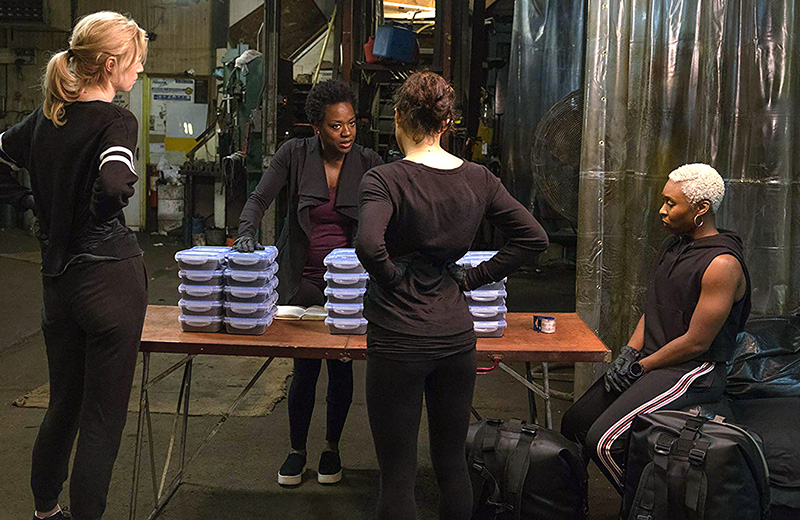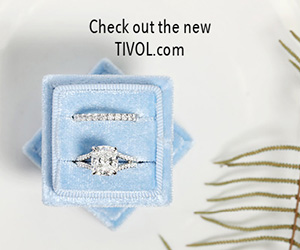
Like another famous Missourian, Mark Twain, Kansas City native Gillian (hard “G” like “girl”) Flynn has achieved international fame by gathering strands of memory from her childhood hometown and spinning them into highly entertaining tales.
Flynn’s novel Gone Girl spent more than 100 weeks on the New York Times bestseller list and was turned into a film, which Flynn wrote the script for, starring Ben Affleck and Rosamund Pike in 2014.
A year later, Charlize Theron starred in Dark Places, adapted from Flynn’s second bestseller.
This summer’s hit mini-series from HBO, Sharp Objects starring Amy Adams, was adapted from Flynn’s debut novel. Less than two weeks after the Sharp Objects finale aired, Flynn was on the red carpet at the Toronto International Film Festival Toronto for a screening of Widows, a big-budget heist thriller she co-wrote with acclaimed British director Steve McQueen, director of 12 Years a Slave.
Next, Flynn will jet over to London, where Widows was chosen to be screened at the opening-night gala of the BFI London Film Festival Oct. 11.
Flynn’s life moves at the same breathless pace as her writing, but she was able to talk to IN Kansas City for 18 1/2 minutes in-between meetings from her current home base in Chicago.
Flynn speaks at a languid pace in a smoky voice punctuated by soft, low laughter about her childhood home in Coleman Highlands, the midtown neighborhood where her parents still live, the place she still calls “home,” even though she lives in Chicago
What was Coleman Highlands like when you were growing up?
It was this little, tucked away place that absolutely no one knew about (laughs). You would say “Coleman Highlands” and people would give you this blank look. When I was growing up there were not a lot of kids there.
Now, it’s a whole pack of kids that are growing up there, and it’s much more of a place to raise families. It’s great because now we bring our kids back home—our kids are four and eight—and it’s the greatest place in the world. They run out the door and there are kids all up and down the street. It looks like this little Norman Rockwell neighborhood.
We always come back for the Fourth of July, and there’s this great little neighborhood parade where all the kids have their little wagons and dress up—my daughter has a little red, white and blue dress that she always wears and they march around the neighborhood in a parade and we have a big neighborhood picnic. It really is a special place.
We lived on this kind of loop-de-loop spot that you just wouldn’t go to [if you didn’t live there], so I could ride my bike all around, and my parents walked to work over at Penn Valley [Community College], and there were these cool old houses.
Were there special landscape features that you remember being drawn to as a child?
Coleman Highlands had giant, massive trees. I was constantly climbing trees. There was a wonderful park that now has a bench named after my parents because I grew up going down there so much. It has a swayed sycamore tree that I would always try to run up sideways—(laughs) sooner or later I knew I was going to get up it.
And there were mulberry bushes everywhere—I would constantly jam mulberries in my mouth (laughs). There were crooked old-fashioned sidewalks I remember playing hopscotch on, and learning how to ride my bike, and every bike I got I would name it after a horse.
I just remember the joys of being a free-range kid of the ’70s. And always feeling very safe and getting to go to the very end, which is this lookout where you can see over downtown and hear the trains go by and watching the sun go down.

How did that place, Coleman Highlands, shape the person you became?
It made me independent. There weren’t a lot of other kids, so I was looping around, playing by myself a lot, and being able to be alone and be in my head a lot.
I think it helped make me a writer. I kind of had a Huckleberry Finn kind of childhood, because my parents trusted me to explore all over Kansas City.
I was a kid who was always walking around and seeing what there was to see and poking around all over the place. I was very interested in what was out there, always observing.
“I particularly like novels that stake out a certain town and authors that write about a certain place over and over again and who seem very attracted to the city they live in or the city they grew up in.”
How do you think about place as an element in your novels?
Place is incredibly important in my novels, as in every novel. I don’t much want to read a novel that doesn’t have a sense of place. That doesn’t interest me very much, it feels very antiseptic.
I particularly like novels that stake out a certain town and authors that write about a certain place over and over again and who seem very attracted to the city they live in or the city they grew up in.
All my novels come back again and again to Missouri [she pronounces it “Missourah”] and Kansas. Those are just landscapes that interest me and places that interest me. I love writing about it. And certain dark places, you have the Kansas City Bottoms that becomes its own character in Gone Girl on the other side of Missouri, and again and again it’s a place I return to.
You had this idyllic childhood, so why did you grow up to write such dark novels and screenplays?
Oh, just ’cause that’s what I like. I have always liked scary stories. I was one of those kids that grew up watching Kansas City’s Friday Fright Night on Channel 41, no matter what. I think there are two kinds of people in the world: people that like to look under the rock, and people that don’t. And I’ve always liked looking under the rock. I like to be scared, I like to make people scared, and I like exploring the dark side of nature and life, like why people do bad things. It’s always been part of my makeup since I was a very young kid.
“I believe very strongly that women should be portrayed in all the variations that exist. Men can be good and bad, and women can be good and bad.”
You’ve been criticized for writing female characters that are evil and dark. Why do you make that artistic choice?
Well, number one, I like to point out that I write female characters that are good, too. It’s just that people like to point out the characters that are bad.
I believe very strongly that women should be portrayed in all the variations that exist. Men can be good and bad, and women can be good and bad. We all know that there are bad women out there. We all know women who are bad. And it’s extraordinarily dangerous and actually misogynous to represent only women who are good. Because that puts us in this very small and constricting box.
I think you need to show women as human. And being a human means you have this full range of emotion good and bad, and you have this full range of ability to do good and bad things. I think it’s scary that in 2018 we still think it is shocking that there are bad women. And certainly, I’m not saying these fictional bad women are admirable. I’m saying these women are villains (laughs).
Interview condensed and minimally edited for clarity.


